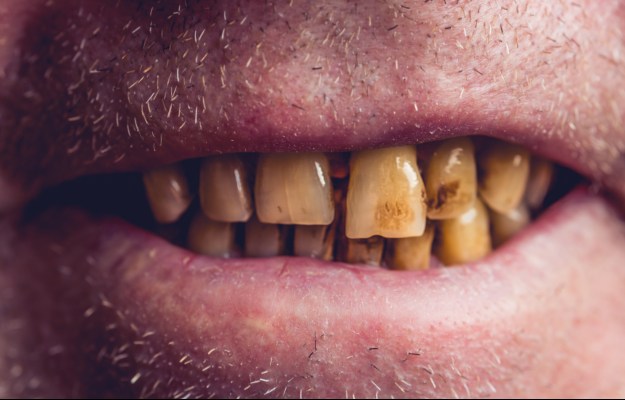Every cigarette packet comes with a clear warning: "smoking kills". Yet, according to the World Health Organization's Global Adult Tobacco Survey 2017 India Report (GATS), 99.5 million people in India currently smoke tobacco. To break this up by gender, 19% of India's male population and 2% of India's women smoke.
There are three different types of smokers:
- Light smokers, who smoke fewer than 10 cigarettes per day.
- Heavy smokers, who smoke one pack a day or more.
- Average smokers, who fall in-between the light and heavy categories.
Smoking carries a risk of heart disease, stroke, coronary artery disease as well as oral cancer, throat cancer, oesophagal cancer and cancer of the other vital organs.
It is never too late to quit smoking. All you need to do is make a firm decision about quitting. Cigarettes contain an addictive substance called nicotine - nicotine therapy and continuous counselling act as an aid to deal with the withdrawal symptoms of smoking cessation.
Some types of yoga asanas like the cobra pose, shoulder stand pose and the use of natural ingredients like ginseng and liquorice (mulethi) are also said to help you quit smoking, though there isn't sufficient research to back these claims.
- Benefits of quitting smoking
- Make a plan to quit smoking
- How to deal with withdrawal symptoms of smoking
- Nicotine replacement therapy to stop smoking
- Counselling to quit smoking
- Yoga to quit smoking
- Acupuncture to quit smoking
- Foods that may help you quit smoking
Benefits of quitting smoking
As per the World Health Organization (WHO), there are both immediate and long-term beneficial changes that have been reported after quitting smoking:
- The heart rate and blood pressure come back to normal within 20 minutes of quitting.
- The levels of carbon monoxide (a poisonous gas) in the blood drop to normal after 12 hours of quitting.
- There is an improvement in circulation and lung function after 2-12 weeks of quitting. At this stage, the heart and lungs start getting enough oxygen for proper function.
- There is a decrease in coughing and shortness of breath sometime after one month to nine months of quitting.
- The risk of getting cardiovascular disease (heart disease) halves to what it was while smoking, after one year of quitting.
- The risk of stroke minimises after five years of quitting.
- The risk of cancer of the mouth, throat, oesophagus, as well as lung cancer, bladder cancer, cervical cancer, and pancreatic cancer falls to about half to what it was while smoking, after 10 years of quitting.
- The risk of having coronary heart disease becomes equivalent to that of a nonsmoker's after 15 years of quitting.
Read more: 10 harmful effects of smoking
Make a plan to quit smoking
You have to be motivated, determined and focused enough to kick the habit of smoking.
- The first step towards quitting is to plan how and when to do it. Pick a date to quit: this will give you some time to prepare. Make sure that the date you have chosen is not a special day when you might get very busy or tempted (like at a party with friends).
- The second step is to let your loved ones know that you’re quitting so that you can get their support. Tell them how they can help you quit smoking.
- Thirdly, get rid of the things that remind you of the habit. Throw away all the lighters and empty cigarette packets that can trigger your urge to smoke again.
How to deal with withdrawal symptoms of smoking
No matter how hard you try, you might not be able to avoid all the cravings. So you need a plan to cope with the urge to smoke.
- Remind yourself about why you thought of quitting in the first place - be it for health, emotional or financial reasons. Also, think about the benefits of quitting smoking like getting healthier, sparing your loved ones from secondhand smoke and also saving money.
- Do not fall into the trap of having just one cigarette to satisfy your craving, because you know there is no pause after that.
- Studies have shown that the craving lasts for 5-10 minutes, so all you need to do is delay. Tell yourself that you will have a smoke after 10 minutes and distract yourself for that time period. For instance, just go to a smoke-free zone and start talking to someone.
- Whenever you have a craving, munch on some nuts and seeds, like sunflower seeds, or raw carrots - they will not only help you avoid smoking but they are nutritious, too.
- When you feel the urge to smoke, indulge in some sort of physical activity. Go for a short run, walk around or run up and down the stairs a few times. A short burst of energy can help you avoid your craving.
- Contact your friends or family and talk to them. Share some old memory, share a laugh, distract your mind from the craving.
Nicotine replacement therapy to stop smoking
People who have been smoking for years might experience withdrawal symptoms like a desperate urge to smoke, restlessness, difficulty concentrating, irritability, anger, anxiety, sadness, increased hunger and sometimes depression. The withdrawal symptoms are the strongest in the first week after quitting.
Nicotine replacement therapy (NRT) can help people deal with the withdrawal symptoms as it delivers a controlled amount of nicotine minus the harmful components of tobacco. One should be cautious about using nicotine replacements - like nicotine patches and nicotine gum - as excessive use of these NRT products can bring harmful consequences.
The possible side-effects of nicotine replacement therapy are coughing, mouth sores, throat irritation, nausea, nervousness, increased heart rate and headache.
Nicotine can be delivered in various forms like gums, lozenges, patches, inhalers and nasal spray.
Read more: Home remedies for nausea and vomiting
How to use nicotine gum
These chewing gums contain a very low amount of nicotine in them. They can be bought without a doctor’s prescription. The nicotine is absorbed from the mucous lining of the mouth (oral mucosa).
Here's how to use it:
- Do not eat or drink 15 minutes before or after chewing nicotine gum. Especially avoid fizzy drinks, coffee and beer just before and after chewing nicotine gum.
- Bite into the gum and chew it until you have a peppery taste or tingling sensation in your mouth.
- Put the gum between your gum line and cheek until the tingling stops, to absorb the maximum nicotine.
- Chew on the gum again to release the nicotine.
- You can continue doing the same for 30 minutes, then discard the gum.
Nicotine lozenges use
These lozenges are tablets which contain a small amount of nicotine in them. The technique of using these lozenges is:
- Do not eat or drink 15 minutes before or after having a lozenge.
- Place a lozenge between your gum line and cheek and suck on it slowly.
- It takes approximately 20 minutes for the lozenge to dissolve and get absorbed into the mucosa.
- Do not use more than one lozenge at a time.
Is a nicotine patch safer than smoking?
The nicotine patch, also known as transdermal nicotine patch, is a self-sticking patch which slowly releases small amounts of nicotine into the body through the skin. The technique of using this patch is:
- The patch has to be placed at any hairless area present below the neck and above the waist, like on the upper arm or chest.
- There are two different types of patches available for smokers: 16-hour patch, ideal for the light to average smokers, and 24-hour patch, ideal for heavy smokers. The dosage can also vary from 5 milligrams (mg) of nicotine to 22 mg.
- The patch should be replaced every day.
While these patches are designed to help you quit smoking, it is important to reduce your dependence on them over the weeks - users have reported sleep disturbances as a result of using the 24-hour patch. Another common problem is skin irritation in the area where you stick the patch - changing the location, as per a doctor's advice - can help reduce this irritation.
Nicotine inhaler
It is an inhaling device with a thin tube and nicotine cartridges inside it, which releases nicotine in small doses. Nicotine inhalers can only be prescribed by doctors.
Unlike other inhalers which deliver the medicine to the lungs, when you puff on the nicotine inhaler, it releases the nicotine in the mouth and throat. Nicotine gets absorbed there and reaches the bloodstream.
You should not inhale the nicotine for more than a minute at a time.
Counselling to quit smoking
The medication to quit smoking works better when combined with counselling. For some people, messages of support by phone, email or text are significant, while others respond better to in-person support groups.
In-person counselling involves a doctor who assists the patient in their attempt to quit tobacco and also refers them to cessation services.
The initiative "Be Healthy Be Mobile" by the government of India in partnership with World Health Organization (WHO) and the International Telecommunications Union has been helping people to quit the habit of smoking by providing them with constant counselling and support since 2015.
The programme aims to reach out to all kinds of tobacco users who want to quit tobacco and support them towards successful quitting through constant text messaging on mobile phones.
Yoga to quit smoking
Studies have claimed that certain yoga pranayamas and asanas can help in curbing the withdrawal symptoms of quitting smoking.
A 5-minute session of breathing exercises (like pranayama) and seated meditation, followed by 45 minutes of asanas and 10 minutes of closing postures are said to help in relieving stress and distracting from the urge to smoke.
They help in improving breathing and circulation, reduce blood pressure, anxiety and stress. You can try some of these asanas in the presence of a trained instructor:
- Kapalbhati pranayama
- Alternate nostril breathing technique (Nadi Shodhan pranayama)
- Cobra pose (Bhujangasana)
- Bridge pose (Setu Bandhasana)
- Shoulder stand pose (Sarvangasana)
- Child pose (Shishuasana)
- Triangle pose (Trikonasana)
- Corpse pose (Shavasana)
Acupuncture to quit smoking
Studies have shown that acupuncture along with some Chinese herbs and hypnotherapy (training of subconscious mind) may be helpful in the cessation of smoking.
There is a protocol called NADA (national acupuncture detoxification association) which says that a three to five point ear acupuncture helps in reducing cravings and irritability and improving the mood, bowel movements and sleep.
Foods that may help you quit smoking
Certain natural elements like liquorice, cayenne pepper, green oats, ginseng, honey, ginger and grape juice are said to help quit smoking by relieving the withdrawal symptoms.
There isn’t enough research to back this claim, but there is no harm in trying them out.
Doctors for How to quit smoking

Dr. Prince Asrani
Psychology
2 Years of Experience

Dr. Shivani Singh
Psychology
3 Years of Experience

Dr. Ansha Patel
Psychology
11 Years of Experience

Dr. Sapna Zarwal
Psychology
19 Years of Experience
References
- Bock BC, Fava JL, Gaskins R, Morrow KM, Williams DM, Jennings E, Becker BM, Tremont G, Marcus BH. Yoga as a Complementary Treatment for Smoking Cessation in Women. J Womens Health (Larchmt). 2012 Feb;21(2):240-8. doi: 10.1089/jwh.2011.2963. Epub 2011 Oct 12. PMID: 21992583; PMCID: PMC3304243.
- Stuyt EB, Voyles CA. The National Acupuncture Detoxification Association protocol, auricular acupuncture to support patients with substance abuse and behavioral health disorders: current perspectives. Subst Abuse Rehabil. 2016 Dec 7;7:169-180. doi: 10.2147/SAR.S99161. PMID: 27994492; PMCID: PMC5153313.
- Litscher G. Ear Acupuncture according to the NADA (National Acupuncture Detoxification Association). Medicines (Basel). 2019 Mar 31;6(2):44. doi: 10.3390/medicines6020044. PMID: 30935106; PMCID: PMC6630623.
- Center for Disease Control and Prevention [internet], Atlanta (GA): US Department of Health and Human Services; Prepare for Cravings
- Center for Disease Control and Prevention [internet], Atlanta (GA): US Department of Health and Human Services; Build Your Quit Plan
- National Health Service [Internet]. UK; 10 self-help tips to stop smoking
- American Heart Association, American Stroke Association [internet]: Texas, USA AHA. Help! I Want to Quit Smoking!
- American Lung Association. [Internet]. Chicago. How to Quit Smoking
- American Cancer Society [internet]. Atlanta (GA), USA; How to Quit Smoking
- American Cancer Society [Internet] Atlanta, Georgia, U.S; Nicotine Replacement Therapy for Quitting Tobacco.
- Health Harvard Publishing: Harvard Medical School [Internet]. Harvard University, Cambridge. Massachusetts. USA; What’s the best way to quit smoking?.













